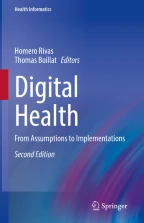
A wide range of methods and algorithms elaborated over decades by scientists from diverse fields—such as artificial intelligence, statistical learning, and computer vision—led to the development of automated systems that are able to mimic or assist health specialists in both routine and complex tasks related to medical images, such as identifying a pathological finding on a chest X-ray or contouring a tumor on an magnetic resonance image.
Although the high performance of these systems has been reported in an ever-increasing number of scientific studies, their introduction into daily clinical workflows is still challenging. A careful design of the implementation pathway is imperative to achieve a successful impact for healthcare actors (physicians, patients, or healthcare providers, among others). This implementation takes place at the intersection of machine-learning engineering and medicine, which makes the deployment of these systems into real clinical settings an inherently multidisciplinary task.
In this chapter, we explore the current context by describing the main definitions, chief challenges, and existing solutions of each step involved in the process. Firstly, we illustrate how quality image datasets are key to obtaining robust models in algorithm development. We then describe the role of validation studies: the evaluation of the ethical and legal aspects of artificial intelligence in the medical imaging field is even more incipient than the technologies themselves. This assessment is key to devising appropriate regulatory frameworks adapted to the particular characteristics of these technologies in order to adequately audit the processes involved. Then, we discuss the integration into health informatics systems focusing on how and what approaches exist to walk this last mile of the introduction of computer vision into healthcare workflows. Finally, we summarize the current state of development and application of these tools and then point out some of the future directions in this area.
This is a preview of subscription content, log in via an institution to check access.